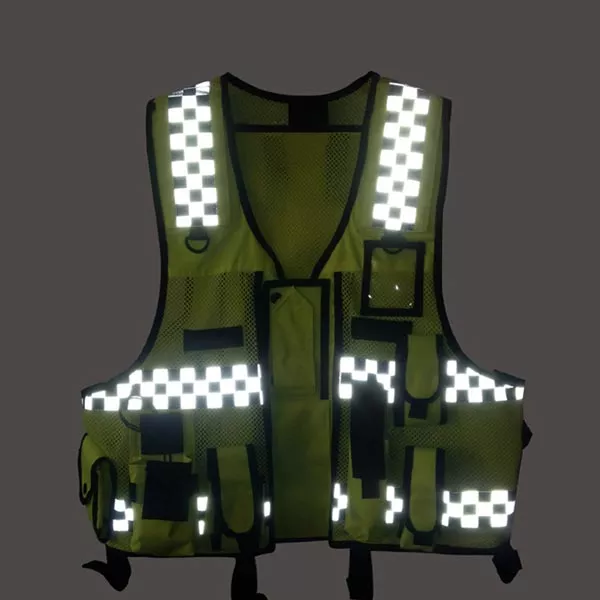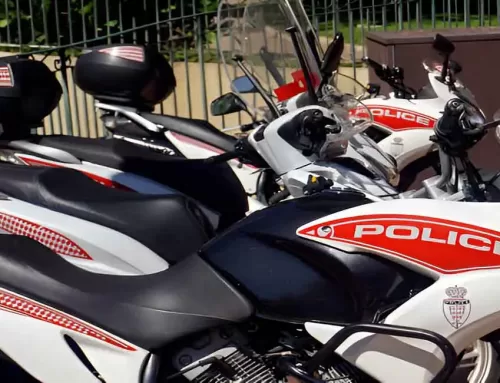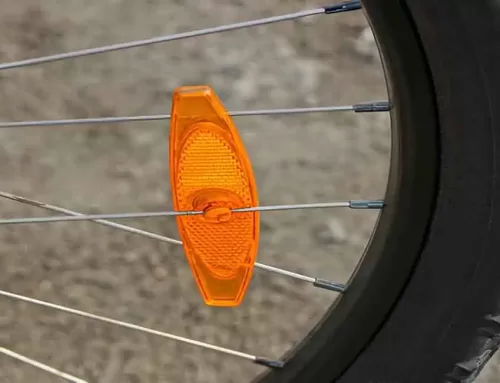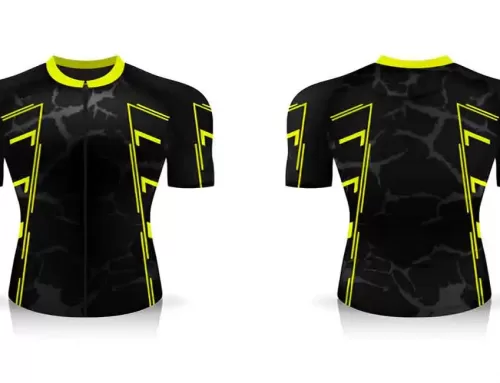Do Safety Vests Work?

Do safety vests really work? Here are some tips. Not all vests are created equal. Some are designed to be just reflective thongs, while others are functional pieces of clothing with pockets and other features. Before buying a safety vest, it’s important to learn about the different styles, sizes, and features available for your job site. After all, these garments are designed to protect you from injury and help you remain productive.
Breakaway safety vests
If you are in the construction industry, you’ll need breakaway safety vests. These vests are designed to prevent you from tripping and are highly visible in the field. You can even customize breakaway safety vests with your logo or company’s safety message. You can wear them on site for brand identification, as well as to promote your business. But, what is it exactly that makes breakaway vests so important?
A breakaway safety vest prevents you from being pulled into a machine by its drawstring. It also keeps your body visible to the equipment operators. Its 5-point drop shoulder breakaway design helps prevent entanglement in machinery. Another great feature is the mic tab on the left side. Whether you’re working at night or on a day shift, breakaway safety vests are essential for your safety. If you’re an electrician, you should definitely consider one.
Whether you’re in a construction site or an office, breakaway safety vests protect your body from a fall or entanglement in high-traffic areas. They’re made of durable polyester mesh and are ANSI/ISEA-compliant. They feature reflective tape across the chest, back and shoulders. The breakaway design helps you avoid being dragged into hazards, and it’s also easy to remove.
Inflatable air vests
Inflatable air vests do work! The safety benefits of an air vest far outweigh the cost, and they can be refilled with gas at any time. Here is a video showing how an air vest works. Once inflated, air bags can be distributed anywhere in the vest. The time it takes for an airbag to fully deploy will vary between brands. Inflatable air vests should be worn by everyone on the bike.
An air vest works by absorbing the force of impact in a fall. The air inflated pockets cushion the impact and disperse it, protecting the torso and internal organs. In addition, they support the upper body, avoiding bruises and cuts on the ribs. Some brands even claim to provide extra support to the thoracolumbar spine. If you’re wondering whether inflatable air vests actually work, this article explains why they can be an excellent choice for any bike rider.
There’s still some confusion when it comes to air vests, but one thing is certain: they do work. Many manufacturers have tested their products using different testing authorities, so they have an incentive to sell you their product. The manufacturer of the Air Vests claims that it works for riders of all levels, but this is a purely marketing claim. There is no scientific evidence that air vests prevent serious chest injuries, but they can be an effective safety solution for cyclists.
Mesh vests
While they are not as breathable as solid safety vests, mesh safety vests are a popular choice for the hot summer months. Because of their lighter weight, they are more flexible and breathe better than solid vests. These vests are a great option for hot-weather jobs, because they can help prevent heat stroke while keeping workers visible. There are many different kinds of mesh safety vests to suit every workplace. Here are some of their most notable features.
A mesh safety vest is perfect for hot days because it allows workers to stay cool and comfortable. The material is lightweight, breathable, and incredibly high-visibility. These vests are available in different styles and colors, but most models feature reflective tape for increased visibility. These reflective vests can also meet specific OSHA and ANSI requirements. You can find a mesh vest in different colors, which means you can choose the right one for your needs.
Mesh safety vests come in different styles, so there’s one for every need. Class 2 vests are great for working outdoors in the summer, as they’re made of 100% ANSI polyester mesh. Their lightweight material prevents sweat from escaping and makes them comfortable for hot work days. Other great options include the Occunomix ECO-GCZ Mesh Standard Vest, which is made of 100% ANSI polyester mesh. It has dual-sized pockets with a zipper closure.
Body protectors
Safety vests are wearable safety gear that ensures workers are visible in an accident. Made from polyester or vinyl, these vests are durable and water-proof. The bright colors of these vests provide a stark contrast to the surrounding environment, making the wearer immediately noticeable. Some vests even have a logo or branding to make them more appealing to employers. There are many reasons to wear a safety vest at work, but here are just some of the benefits.
Unlike body protectors, air vests are typically worn over foam-padded body protectors. They can be too bulky for small riders, though, and require 66 pounds of pressure to deflate them. Because of this, certified vests provide additional peace of mind to riders. Non-certified vests, on the other hand, offer some protection, so it’s important to find one that fits properly and offers a great fit.
ANSI categorizes safety vests based on their use. For instance, class one vests are worn by low-risk workers. They come with reflective tape that should be centered around the shoulders. These vests don’t have sleeves. They are worn on sites where the traffic speed is below 25 mph. These work sites are typically not near busy roads, so this type of vest is not necessary. Workers wearing these vests are warehouse workers, supermarket cart attendants, and parking lot valets.
Flame-resistant fibers
Inherent fibers are a good option for flame-resistant safety vests. A popular blend of cotton and Modacrylic fibers offers a cotton-like hand while providing excellent resistance to solvents and chemicals. These fabrics are also very strong, making them ideal for flame-resistant environments. Read on for more information about flame-resistant fibers. Listed below are some of the best options for safety vests.
NFPA(r) 2112 Compliant: Flame-resistant fibers in safety vests comply with the requirements of NFPA(r) standards. Flame-resistant safety vests are ideal for individuals working in environments where they may encounter sparks or fire. NFPA(r) 2112 covers flame-resistant garments used by firefighters, petrochemical, oil, electrical utility, and aluminum casing workers.
Natural fibers: Wool is a good choice. Wool has a tighter weave, which means it won’t melt when heated. Moreover, flame-resistant fabrics can withstand high heat impingement for an extended period. These vests are more comfortable than those made of synthetic materials, and they’re incredibly comfortable. So, when choosing your safety vest, make sure it’s made with the right kind of fabric.
While flame-resistant clothing doesn’t have to be entirely fireproof, it can help you escape from dangerous conditions and minimize your injuries. It’s also a great choice for employees working in environments where thermal exposure can cause a fire. Flame-resistant clothing is also the best choice for people exposed to heat or electric arc hazards. They may be in contact with electrical equipment that needs to be kept at a high temperature.
Reflective panels
Reflective panels on safety vests improve visibility at night. This material is created through an advanced process of focusing and post-processing. It uses high-refractive-index glass beads and micro-diamond-shaped crystal lattice to reflect light back to its source. Its reflective properties are highly visible at night and match the background color. The vests may also be made with a Combined-Performance material, which has retroreflective properties and matches the background material.
ANSI-compliant safety vests are made from high-visibility material. They are a good choice for nighttime walking or running, especially in dark conditions. The material is resistant to tears and snags. Reflective panels provide 360-degree visibility. The vests are easy to use, with a hook-and-loop closure. They are also highly visible during the day, and can even be screen printed.
Class 3 vests feature the highest amount of retroreflective striping and background material. This means that the vest must have at least 155 square inches of reflective material. These panels must be at least 2 inches wide and elongated on each shoulder. They should also be a bright yellow or orange color. There are many benefits of using reflective panels on safety vests. They improve worker visibility. If you are looking for the right vest for your business, consider the above-mentioned tips.
Reflective panels on safety vests are an excellent choice for workers in hazardous environments. In addition to their safety benefits, these reflective vests can also increase the visibility of employees and pedestrians. They also make the wearer easier to see during nighttime. The reflective material is composed of a base cloth and a glue, and thousands of high-refractive glass beads. The reflective beads reflect light back to the source, so it is easy for drivers to see a driver wearing the safety vest.





